25 Feb March 2023 Yellowbill

Editor’s Note
The Yellowbill is published monthly except in June, July and August. It is edited by Robert Snow (rsnow@fresnoaudubon.org) except for the Member Photos section, which is edited by Clayton Dahlen (mc_dahlen@yahoo.com). Archived issues are available at https://fresnoaudubon.org/the-yellowbill/.
President’s Message
Greetings, FAS members and friends. I hope this message finds you well, and that you are enjoying the late winter weather.
Spring is on the horizon and there is much to look forward to, wildflower blooms, migrating birds, and several exciting FAS events!
Here is what we have scheduled for March 2023:
- Wednesday, March 8⏤Raptor Trail on the Kings River at Pine Flat Dam, 8:00 AM-1:00 PM
- Saturday, March 18⏤Lost Lake, 8:30 AM – 12:00 PM
- Saturday, March 18⏤Introduction to Birding class at the River Center, 9:00 AM – 12:00 PM
- Wednesday, March 22⏤Sycamore Island, 7:45 AM – 12:45 PM
- Saturday, March 25⏤Introduction to Birding class at Intermountain Nursery, 9:00 AM – 12:00 PM
Anyone interested in these and other upcoming events can check out the FAS event calendar for more information and links to registration: https://fresnoaudubon.org/event-calendar/.
We would like to remind everyone of the current requirements for attending FAS in-person field trips and classes. We are no longer requiring that participants be fully vaccinated. Masks are now optional for all FAS outdoor events. We still require that participants must not be exhibiting any symptoms of Covid-19. Registration is still REQUIRED for all in-person field trips, and participants must register individually. We appreciate your understanding and cooperation.
In early April, FAS will be taking part in Spring Raptorthon 2023. This is a fundraising event put on by the Hawk Migration Association of North America (HMANA). I have formed a core team (whose name is still TBD) that will be performing the count on Saturday, April 8. During the count, the team will be counting not only raptors, but also all the birds seen and heard in the count areas. Some of the areas the team will be counting in will be Road 208 between Highway 41 and Road 211, Lost Lake, Millerton Lake (Madera County side), Friant Cove, and the River Center. We will be inviting members of the public to join us as we count at the various locations. As the time gets closer, we will send out links to donate and more information about where and when the team will be counting. Seventy-five percent of the funds generated will go toward HMANA and the wonderful work that they do, and the other 25% of the funds will go to Fresno Audubon. Here is a link to more information about Spring Raptorthon on HMANA’s website: https://www.hmana.org/raptorthon/.
Thank you again to all of those who attended the February 14 general meeting. Larry Parmeter, longtime FAS member and former FAS president, talked to us about how birds taught humanity to fly, which was a thorough and informative presentation! If you missed Larry’s talk and would like to view the presentation, you can find it and other general meeting presentations on our YouTube channel at https://www.youtube.com/user/FresnoAudubon
The next FAS general meeting is scheduled for Tuesday, March 14. Photographer Robert Groos will be talking to us about his Zambia safari! For links to registration, please check FAS social media, email announcements, or the FAS event calendar at https://fresnoaudubon.org/event-calendar/.
I’d like to remind all of you that FAS is on Facebook, Instagram and YouTube. Please give FAS a follow if you haven’t already! This is a great way to engage with us and stay in the loop!
To end this message, I’d like to share some photos I recently took of a Long-billed Curlew in Morro Bay. Note the longish gray legs, the long, decurved beak with pink at the base, large body, light cinnamon wash on the underside, rust coloring in the outstretched wings, and the heavily speckled backside. Long-billed Curlews nest on the ground in grasslands and ag fields in sections of the interior western United States and southwestern Canada. During winter, this species is found in a variety of habitats, including beaches, wetlands, mudflats, and flooded fields. Long-billed Curlews look very similar to the Whimbrel, which can also be found along the central coast during the non-breeding season. Compared to Long-billed Curlew, the Whimbrel (not pictured) is smaller overall, browner, shorter beaked, and has much more defined striping through the eyes and in the crown. Enjoy!
Please take care of yourselves!
Rachel Clark
Fresno Audubon Society President


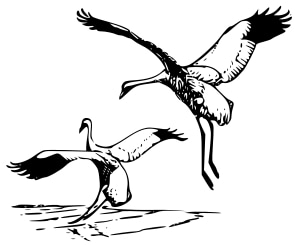
From the Archives
Editor’s Note
We recently cleared out Fresno Audubon’s storage unit and recovered many back issues of The Yellowbill. Robert Snow is in the process of scanning and posting these older issues in the archive section of The Yellowbill on fresnoaudubon.org. We here begin reprinting interesting articles from these past issues in this new section of The Yellowbill.
History of FAS Christmas Count
by Garth H. Spitler
1979 (est.)
The first meeting of those interested in Audubon in this area was held in the fall of 1965 at the Fresno Jr. Museum. As I remember, our club (Chapter) got started immediately with weekend birding trips around the Fresno Area. That December we had a small group out exploring possible sites for a Chapter annual Christmas Count.
In 1966, we had picked out an area centered at Shaw and Clovis Avenues. This allowed us to cover many of our favorite birding areas. Just think of being able to include these locations⏤Avocado Lake, City Sewer Farm, Kearney Park, Lost Lake, Millerton Lake, Red Bank and Watts Valley. For a small group of eager birders we did quite well with 102 species and an estimated 20,902 individual birds. However, there were 2 little items we’d overlooked: 1. Our count circle was made using a 15-mile radius, instead of a 15-mile diameter. 2. We had no screening committee, other than myself, and I was new to the area, so the following were allowed; Swainson’s Hawk, Saw-Whet Owl (fresh dead bird), Williamson’s Sapsucker, Rough-winged Swallow, Sage Thrasher, Long-billed Chat, and Chickadee. I did talk the person who saw the Bridled Titmouse out of the sighting. I think that was the count we saw a Killdeer trying to make like a Phalarope. The longer the bird swam, the lower the water line — that was a sight to remember. Our circle was divided into 4 quadrants that year, so we have the records of the various birds seen.
The next 2 years, 1967 and ‘68, were spent exploring the Kearney Park area vs. the Lost Lake area. In 1967 we saw 110 species, in ’68 it was 1106 with both years’ totals close to 15,000 birds. Some of the rare or unusual birds of those 2 years, besides those previously mentioned were; Red-breasted Merganser, Pigeon Hawk, Semipalmated Plover, MacGillivray’s Warbler, Rufous-crowned Sparrow, Mountain Chickadee, Yellow Warbler, Hutton’s Vireo, Western Wood-Pewee, Ash-throated Flycatcher, Long-eared Owl and Prairie Falcon.
I missed 1969, but a count was made even though not yet official. Sixteen birders saw 87 species and an estimated 14,344 birds. This was in our Lost Lake count area, very close to the present circle. Rare birds reported at this count were Lawrence’s Goldfinch, and Chipping Sparrow. One point which I think had us select the Los Lake area was that Grand National Symbol – the Bald Eagle.
In 1970, my second year as President, a birder by the name of Joyce was insistent that we make an official count. I’m glad she did, because we are now coming up on our 10th Official Count in December of 1979. On this first official count we saw 107 species, 2 races, with an estimated 10,600 birds seen by 19 birders in 5 parties. I think those first 19 members should be acknowledged: K. Barnes, T. Braun, N. & N. Frodsham, M. Frost, J. Hall, R. Hansen, K. Hansen, A. Kasparian, Sister M. Kinsella, J. Mason, W. Mertz, K. Mertz, G. Richard, E. Robinson, D. Rolph, G & B. Spitler, and R. Tremper.
Since that Official count the following years were:
| Year | Counters | Parties | Species | Total Estimated |
| 1971 | 29 | 9 | 109 | 17,582 |
| 1972 | 43 | 14 | 131 | 29,496 |
| 1973 | 32 | 11 | 120 | 21,487 |
| 1974 | 40 | 12 | 123 | 36,048 |
| 1975 | 34 | 11 | 135* | 28,507 |
| 1976 | 49 | 13 | 128 | 20,844 |
| 1977 | 26 | 11 | 125 | 25,697 |
| 1978 | 60 est. | n/a | 132 | n/a |
| 1979** | n/a | n/a | 131 | n/a |
| 1980** | n/a | n/a | 194 | n/a |
*Only 15 away from that 150 mark
** Added to the table in pencil
Why don’t you plan right now to make 1979, our 10th year, a year to remember? Circle the date on your calendar, volunteer to help count, call others, either birders or land owners, we need both to make the count a success. There are over 150 species available in the area, so why not be with us the year we reach that 150 number ⏤ I plan to.
GHS
[Garth H. Spitler]
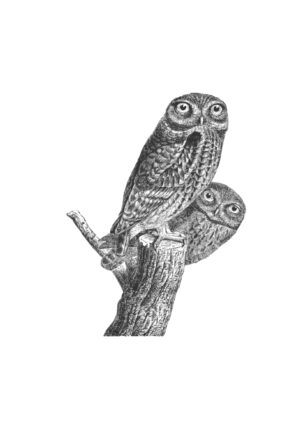
March General Meeting
Robert Groos
Zambia Safari
Tuesday, 14 March 2023
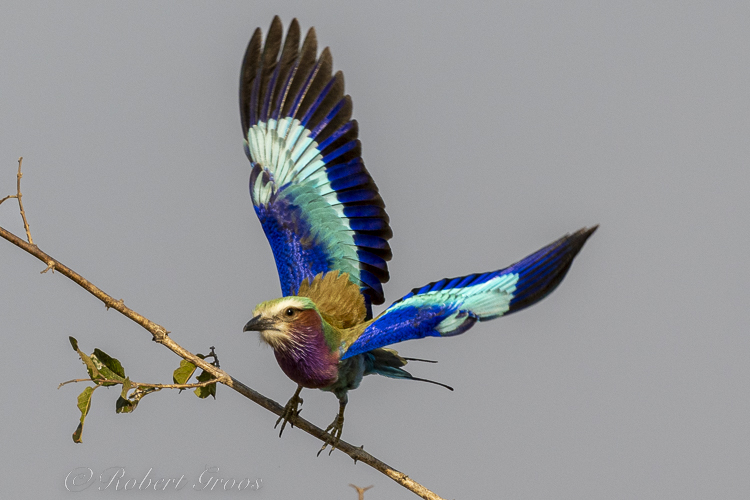
Speaker Bio
Program Description
Join Robert Groos on safari to Zambia. No need to fly all the way to the other side of the world. On this photo and video expedition, you will experience the birds and other wildlife (lions, leopards, elephants, zebra, antelope, of course) of Zambia as if you were sitting by my side in the safari jeep. Enjoy an incredible travel experience, informative as well as entertaining, without leaving the comfort of your own home.
To receive the Zoom link for the meeting, please register here.
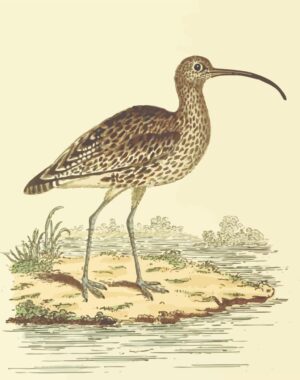
General Meeting Speaker Schedule
Following is the schedule for future speakers. This schedule is subject to change due to cancelations. Check the FAS events calendar for the latest information: https://fresnoaudubon.org/events.

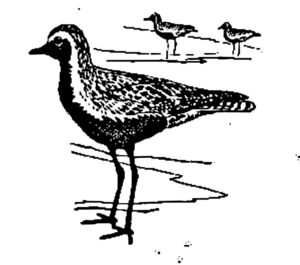
Introduction to Birding Classes at the River Center

Introduction to Birding Class at Intermountain Nursery
Saturday, 25 March 2023
Intermountain Nursery will host a birding class given by Fresno Audubon Society on the beautiful nursery grounds. Beginning birders will see and learn about spring migratory and resident birds in the foothills. Birders will discover easy ways to identify migrating and year-round, local birds. The class will include a walk around the nursery looking for birds. Bring binoculars, lunch, water and dress in layers. Fresno Audubon will have binoculars to loan if you do not have your own. Children are welcome. Rain cancels this event.
Here is a map of the location of Intermountain Nursery.
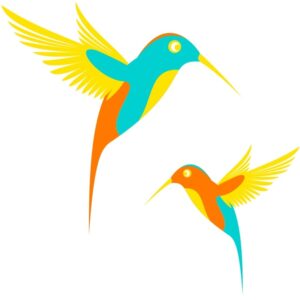
March Field Trips
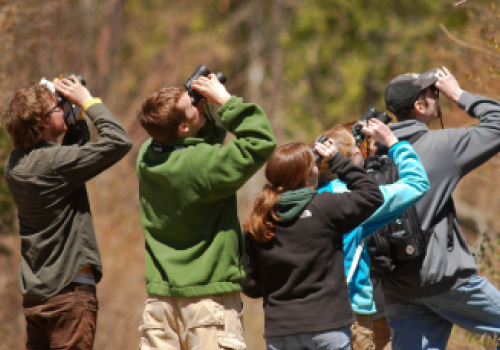
FIELD TRIP GUIDELINES DURING THE COVID-19 PANDEMIC ⏤ Fresno Audubon Society is offering field trips during the now-endemic COVID-19, subject to the following rules. With the continuing risks of exposure and potential illness, everyone must determine their own level of risk aversion. The CDC has recommended that masks should be optional when outdoors. It has been shown that a well-fitting N95 mask protects the wearer for several hours from an infectious dose of virus, so anyone concerned about exposure can choose to wear a mask near others if they feel at risk. Following are our current guidelines for our field trips.
- Participants must pre-register individually using the FAS event registration system.
- Participants must self-screen their own temperature before the outing and must not attend if they are feverish.
- Participants must consent to Fresno Audubon Society’s Liability Waiver by pre-registering.
- Social distancing is encouraged.
- Masks are not required, but participants are encouraged to wear a mask whenever they feel the need.
- Some field trips meet up at a central point before traveling to the field trip location. Participants may form their own car pools at these meetup points.
- Participants must contact their trip leader should they test positive for COVID-19 within three days following the outing so that we can notify others who attended the trip.
Wednesday 8 March 2023 ⏤ The Raptor Trail on The Kings River at Pine Flat Dam with Clayton Dahlen
Join FAS for birding along the Kings River. The trail begins across from the parking lot on the south side of the bridge just below Pine Flat Dam. The trail is basically an easy walk of approximately a mile and a quarter each way, but there is some uneven terrain and river rocks create a cobblestone surface in parts. Some of our target species include Golden Eagles, Bald Eagles, and Osprey.
Participants should bring snacks, lunch (if desired), water, hat, sunscreen, and binoculars, and should dress in layers. Registration is required for this event. If you have any questions, please reach out to either trip leader.
Meet in the parking lot at the south side of the bridge. If you want to look for directions from the eBird map, the Raptor Trail is just across the river from the North Riverside Access Park eBird Hotspot. GPS Coordinates 36.8298592686927, -119.33621274737327.
Checklist: binoculars, scope, field guide, snacks, lunch, water, sunscreen, hat, warm clothes
Saturday 18 March 2023 ⏤ Saturday Bird Walk at Lost Lake with Lynda Schafhauser
Registration is required for this event.
Location: Lost Lake , Fresno County Park
Lost Lake Rd, Friant, CA 93626
Date and Meeting time: 8:30 am , March 28th
Meeting location in park: Audubon Trailhead at the west end (down stream end) of the park. There is a small parking area at the trailhead, and a larger one a few hundred yards further into the park.
Duration of walk: 8:30 am – 12 pm
Special instructions: on weekends the park entrance fee is usually enforced. Fee is $5. Please follow instructions at the entry kiosk if there is no attendant at the kiosk.
What to bring: Binoculars, check weather report for comfortable clothing, (this is the month of March, almost any weather is possible), walking shoes, sunscreen / hat, water, snacks ( or lunch if staying beyond noon), free downloads of Audubon and/or Merlin Apps are very useful, western bird identification field guides are also useful. Be advised , there may be insects such as mosquitos, gnats etc.
Walk Description: walking on mostly flat park grass, or on paved park road, from west ( at the trailhead) to east ( toward Friant Dam and the park campground). We will bird river, river lined grass/ shrub and oak tree habitat, and on the upper road the grassland leading into the park, using binoculars but also using the Merlin Sound ID app as an enhanced identification tool. In the park, there are picnic benches for rest stops, and the restrooms are usually open.
Possible birds: Egrets (several species), Cedar Waxwing, Hawks (several species) Varied Thrush, Bald Eagle, Common Merganser , Acorn Woodpecker, Canada Goose, Ring- necked Duck, Anna’s Hummingbird, Great Blue Heron, Wood Duck, Phainopepla, Black Phoebe, and many others.
Other possible sightings…Coyotes, Bobcats…on the other side of the river.
Registration is required for this walk.
Hard Rain cancels this walk.
Trip Leader: Lynda Schafhauser
Contact information: cell for voicemail or text: 559-474-0651
Email: rufusradar@att.net
Wednesday 22 March 2023 ⏤ Sycamore Island with George Folsom
Registration is required for this event.
Meeting location: Sycamore Island (36.8590560, -119.8230324)
Meeting time: 7:45 AM
End time: Noon, or you may stay and have lunch with the group
Sycamore Island, part of the San Joaquin River Parkway, is along the San Joaquin River in Madera County downstream from River West open space. It offers a variety of habitats: river, ponds, riparian, grasslands, and wetlands. We can expect ducks, raptors, herons, egrets, owls. woodpeckers, finches, swallows, sparrows among many others.
This is a large property and we will do a combination of driving and walking. Walking distance will be 1 to 2 miles but those who don’t care to walk can drive to most of the areas. There are picnic shelters with tables for lunch and restrooms on the property.
Participants should bring snacks, lunch (if desired), water, hat, sunscreen, and binoculars, and should dress in layers.
Registration is required for this event. If you have any questions, please reach out to trip leader at 559-435-9374 or geofolsom@gmail.com
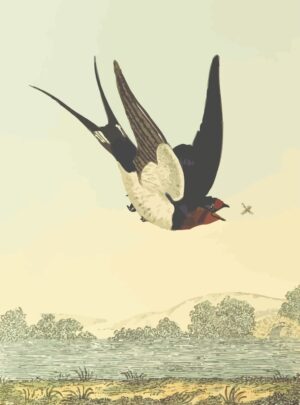
Field Trip Schedule
This schedule is subject to change due to cancelations. Check the FAS events calendar for the latest information: https://fresnoaudubon.org/events.

January & February Field Trip Reports
28 January 2023⏤River West by Susan Estep
8 Northern Shoveler
30 Mallard
20 Common Goldeneye
1 Hooded Merganser
1 Common Merganser
14 Ruddy Duck
5 Pied-billed Grebe
3 Mourning Dove
3 White-throated Swift
6 Anna’s Hummingbird
70 American Coot
5 Killdeer
2 Greater Yellowlegs
4 Ring-billed Gull
40 California Gull
200 gull sp.
4 Double-crested Cormorant
1 American White Pelican
4 Great Egret
13 Black-crowned Night-Heron
12 Turkey Vulture
1 Osprey
2 Cooper’s Hawk
3 Red-tailed Hawk
2 Nuttall’s Woodpecker
8 Northern Flicker
2 American Kestrel
5 Black Phoebe
3 Say’s Phoebe
1 Loggerhead Shrike
4 California Scrub-Jay
2 Common Raven
12 Tree Swallow
8 Ruby-crowned Kinglet
1 Rock Wren
5 European Starling
2 Northern Mockingbird
4 Western Bluebird
1 American Robin
12 American Pipit
8 House Finch
30 White-crowned Sparrow
4 Savannah Sparrow
2 Song Sparrow
2 Spotted Towhee
1 Western Meadowlark
20 Yellow-rumped Warbler
1 February 2023 ⏤ River West Madera by John McDaniel
I am pleased to report a very productive outing along the north side of the San Joaquin River on 1 February 2023. The weather cooperated nicely following a chilly and foggy start, quickly evolving into a very clear and pleasant day for birding. Fifteen participants logged in a total of 57 species, including a pair of Great Horned Owls and a juvenile Golden Eagle in the nearly four hour and three and one-half mile walk. Special thanks to Greg Estep for managing the eBird data and Mike Smith for his guidance on the Golden Eagle identification. A copy of the bird list is appended below.
John McDaniel
River West Madera, Madera, California, US
Feb 1, 2023 8:12 AM – 12:06 PM
Protocol: Traveling
3.511 mile(s)
Checklist Comments: Fresno Audubon Weds walk. Sunny 35-55f.
57 species
Canada Goose 6
Northern Shoveler 2
Gadwall 22
American Wigeon 2
Mallard 6
Bufflehead 1
Common Goldeneye 4
Hooded Merganser 4
Common Merganser 4
Pied-billed Grebe 5
Mourning Dove 3
Anna’s Hummingbird 7
American Coot 62
Killdeer 10
Double-crested Cormorant 8
American White Pelican 2
Great Blue Heron 4
Great Egret 2
Snowy Egret 1
Black-crowned Night-Heron 16
Turkey Vulture 5
Golden Eagle 1 Juvenile.
Cooper’s Hawk 1
Red-tailed Hawk 5
Great Horned Owl 2
Belted Kingfisher 2
Acorn Woodpecker 5
Downy Woodpecker 1
Nuttall’s Woodpecker 8
Northern Flicker 13
American Kestrel 1
Black Phoebe 7
Say’s Phoebe 2
California Scrub-Jay 15
Common Raven 5
Tree Swallow 7
Bushtit 10
Ruby-crowned Kinglet 8
House Wren 1
Bewick’s Wren 1
European Starling 29
Northern Mockingbird 3
Western Bluebird 12
Hermit Thrush 1
American Robin 1
Phainopepla 8
House Finch 7
Lesser Goldfinch 1
American Goldfinch 20
White-crowned Sparrow 26
Golden-crowned Sparrow 2
Song Sparrow 1
Spotted Towhee 9
Western Meadowlark 10
Red-winged Blackbird 17
Brown-headed Cowbird 2
Yellow-rumped Warbler 12

Fresno-Madera Birds
by Jeff Davis
Including reports for the period of
January 16, 2023 to February 15, 2023
A Eurasian Wigeon along the Madera Canal January 26 (ph. RS), January 27 (ph. GF), and February 5 (ph. GW) was the first for Madera County since one was found also along the canal in March 2021.
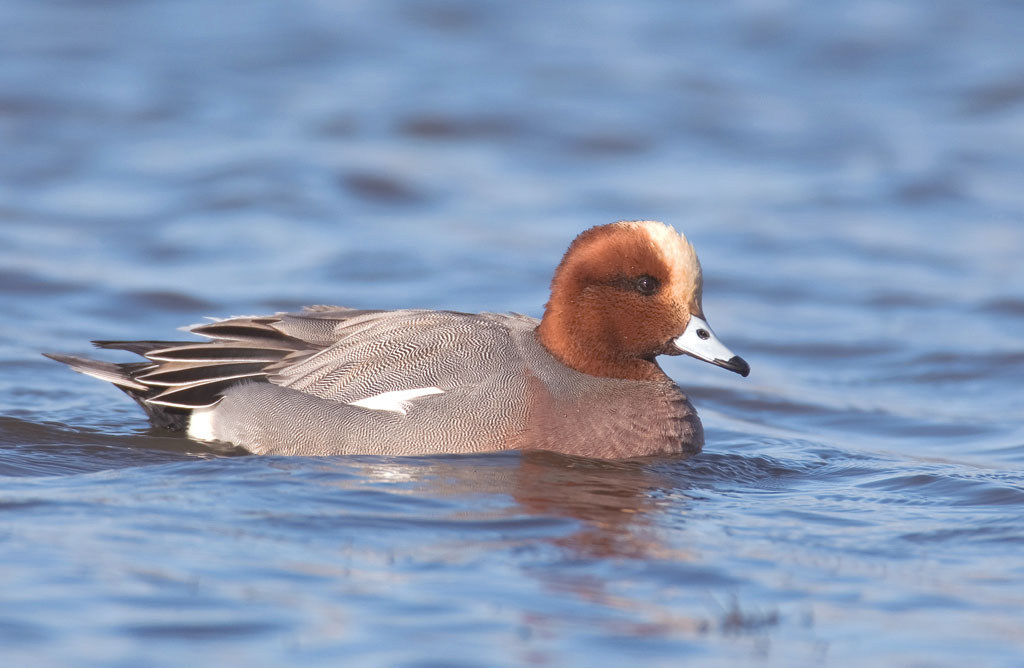
Madera County’s first White-winged Scoter discovered at Bass Lake December 29 continued through the period (ph. m.ob.).

About 200 Mountain Plovers southwest of Tranquility February 7 (ph. JM) was among the largest flocks ever reported in Fresno County.

Seven Iceland Gulls at Ave 21 just west of Hwy 99 January 22 (ph. GW) was the largest number ever reported in Madera County.
Establishing the third record for Fresno County, a Red-throated Loon spent time at Avocado Lake January 18 (ph. JM, m.ob.) through January 21 (ph. m.ob.).

We average about one Hammond’s Flycatcher every two winters, so one in northeast Fresno near Herndon and Millbrook avenues January 19 (LY) fit the pattern.

A Northern Rough-winged Swallow at River West January 25 (ph. GF) was presumably an early migrant, appearing about two weeks ahead of normal arrival time.

Two Barn Swallows at Ledger Island January 20 (GF) followed two earlier occurrences this winter.

Our first Cliff Swallows of the season, right on schedule, were four at the Fresno Wastewater Treatment Plant February 1 (ph. GW).

Cited Observers: George Folsom, Josh McLaughlin, Rick Saxton, Lowell Young, Gary Woods. ph. = photographed by.
If you make an interesting observation, we’d love to hear about it. We are especially interested in birds listed as casual or rare on the Fresno Audubon checklist and those found out of season, out of normal habitat, or in unusually large numbers. Please submit reports to eBird, the Fresno County Birders e-mail list, or Jeff Davis (jndavis@ucsc.edu).

Member Photographs
Larry Cusick

Jim Curnyn



Clayton Dahlen


George Folsom


Bob Groos

Susan Joy





Richard Sexty




Thomas Snow

Birds in the News
Links to Recent Articles on Birds
BirdFlow software anticipates migratory patterns of birds

Computer scientists at the University of Massachusetts Amherst, in collaboration with biologists at the Cornell Lab of Ornithology, recently announced in the journal Methods in Ecology and Evolution a new, predictive model that is capable of accurately forecasting where a migratory bird will go next — one of the most difficult tasks in biology. The model is called BirdFlow, and while it is still being perfected, it should be available to scientists within the year and will eventually make its way to the general public.
On routine house call, pest control finds 700 pounds of acorns in the walls

Late last month, Castro, 42, shared photos of his acorn discovery on Facebook, where his small company’s page received hundreds of likes and comments. Since he began working in pest control in high school, Castro said, he has watched many animals outmaneuver people to enter their homes and access their food. He once caught about 60 rats that scurried through a drain and chewed through a floor to reach a dog’s food bowl, he said. Around Dec. 15, Castro said, a customer complained that maggots and mealworms were emerging from the wall in their Glen Ellen, Calif., home. Castro figured the service would be typical: He would remove a dead animal and fix the hole it entered. After arriving at the house around 8 a.m. with two colleagues, Castro used a drywall knife to create a 4-by-4-inch hole in a second-floor bedroom’s wall. Acorns rushed out of the pocket. Castro said the pile stood about 20 feet high.
Pigeons and Computers Have One Surprising Thing in Common, Study Reveals

Time and time again, artificial intelligence is heralded for its impressive feats. Computers have beaten humans in dozens of games, crafted essays instantaneously, and even detected cancerwith stunning accuracy. In many ways, AI might seem to surpass the intelligence of humans. But what about pigeons? The birds’ primary learning strategy is nearly identical to machine learning algorithms on a basic level, according to a new study published in the journal Current Biology.
Dinosaurs of the Sky: Consummate 19th-Century Scottish Natural History Illustrations of Birds

Birds populate our metaphors, our poems, and our children’s books, entrance our imagination with their song and their chromatically ecstatic plumage, transport us on their tender wings back to the time of the dinosaurs they evolved from. But birds are a time machine in another way, too — not only evolutionarily but culturally: While the birth of photography revolutionized many sciences, birds remained as elusive as ever, difficult to capture with lens and shutter, so that natural history illustration has remained the most expressive medium for their study and celebration.
Feds propose Wood Stork delisting

On Tuesday, February 14, the U.S. Fish and Wildlife Service announced a proposal to remove the Wood Stork from the federal list of endangered and threatened wildlife. The bird is the only species of stork breeding in the United States.
Why Are Purple Martins Declining in the United States?

Climate change, urbanization drive major declines in L.A.’s birds

Climate change isn’t the only threat facing California’s birds. Over the course of the 20th century, urban sprawl and agricultural development have dramatically changed the landscape of the state, forcing many native species to adapt to new and unfamiliar habitats. In a new study, biologists at the University of California, Berkeley, use current and historical bird surveys to reveal how land use change has amplified—and in some cases mitigated—the impacts of climate change on bird populations in Los Angeles and the Central Valley.
These little ceramic huts are helping endangered penguins and their chicks

A new form of real estate is popping up along the beaches of South Africa and on the dry, barren islands off its coast – tiny white beach huts. With good ventilation and a sea view, they are just big enough to fit a family of African penguins. Their unique selling point: a safe and cool place for penguins to breed African penguins, unlike their relatives that live in snow and ice, thrive in the cold currents of the South Atlantic Ocean. But when they come to land, their thick black coat absorbs the heat, and they desperately look for cover – both for themselves and their fragile eggs.
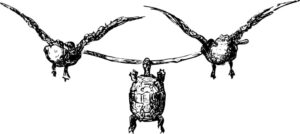
Membership
Fresno Audubon’s (FAS) annual membership year runs from September 1st through August 31. Thank you to all of you who generously support Fresno Audubon by paying annual membership dues. Your support makes it possible for FAS to host outstanding speakers on our Zoom General Meetings, maintain our website, conduct guided field trips, teach introductory birding classes, maintain the bird feeding station at the River Center, conduct multiple bird surveys, and advocate for regional and local bird-related issues. To learn more about our work, download our 2020 Annual Report.
FAS members also have exclusive access to the FAS Birding Resource Guide, an online compilation of Central Valley birding resources, and new members receive a FAS sticker that displays the Fresno Audubon logo and website.
Fresno Audubon Society membership levels are:
$15 Student
$25 Individual
$35 Family
$1000 Golden Eagle (Life)
Fresno Audubon Society
PO Box 3315
Fresno, CA 93650
Thank you for your continuing support of Fresno Audubon Society!


Sorry, the comment form is closed at this time.